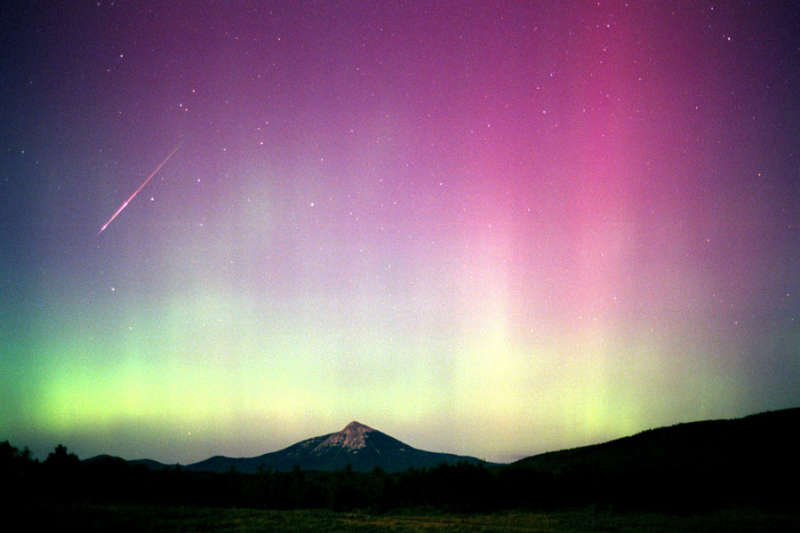Credit & Copyright: Jimmy Westlake
(Colorado
Mountain College)
Explanation:
Dark skies
are favored for viewing meteor showers --
so the best viewing of this year's Perseids will occur in the early morning.
While the Perseid
meteor shower is scheduled to peak over the
next few days, bright light from a
gibbous Moon will also
flood the early evening and mask the
majority of relatively faint meteors.
Still, skygazing in the early morning after the Moon sets (after about
2 AM local time) could reveal spectacular
earthgrazing meteors.
Persisting observing at any time after sunset can reward northern hemisphere watchers
looking
for occasional Perseid fireballs.
Astronomer Jimmy Westlake imaged this bright
Perseid meteor despite the combination
of moonlight and auroral glow over Colorado skies in August of 2000.
Authors & editors:
Robert Nemiroff
(MTU) &
Jerry Bonnell
(USRA)
NASA Web Site Statements, Warnings,
and Disclaimers
NASA Official: Jay Norris.
Specific
rights apply.
A service of:
LHEA at
NASA /
GSFC
& Michigan Tech. U.
Based on Astronomy Picture
Of the Day
